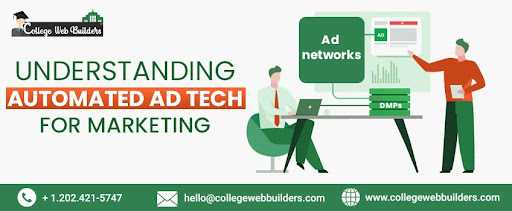
The Advantages of Augmented Reality in Marketing
Augmented reality (AR) is one of the fascinating approaches to reality that involves overlaying computer-generated graphics, video, or sound on an image of the real world viewed through a video camera. Though AR has existed for some time, it has not been widely adopted in marketing until recently, when organizations discovered its usefulness in engaging the customer. The implementation of augmented reality is increasingly being witnessed by organizations of all sizes, ranging from international companies such as Ikea and Sephora to local firms as a tool to advertise their products, improve their printed and outdoor advertisements, and create interaction. How? Our Search Engine Marketing Company Ashburn USA has noted down - read below!
What does Augmented Reality Mean, and How does it Function?
Augmented reality brings computer-generated items such as 3D objects, animations, and sounds into the real physical environment. Unlike virtual reality, which involves covering the users with a headset and isolating them into a synthetic world, AR places computer-generated features over objects you can see with your own eyes.
Consumer-facing AR apps use the cameras and sensors of a smartphone to perceive their surroundings. They then employ features such as object recognition and motion tracking to ensure the information and objects within the virtual environment correspond to those in the real world. The result is a new layer of augmented reality superimposed on the physical reality and revealed through the device's screen.
For instance, if an augmented reality shopping application is developed, you can see what furniture will look like in your living room before purchasing it. You aim one at a movie poster instead of the trailer playing; a 3D model of the poster is played. AR software capabilities and even hardware progress add to the possibilities of what AR can achieve.
Present and Prospective Applications in Marketing
Product Visualization
AR helps potential customers find new perspectives on products and how they would look in their houses or work. Apps enable consumers to place furniture in their houses, apply makeup on their faces without makeup, or even place appliances in a kitchen. It enables buyers to make better decisions on what to purchase, making them eager to order several items.
Some of the popular AR product visualization apps are Ikea Place and Sephora Virtual Artist out in the market. It's easy to expect that more brands will take such steps across many industries in the future. As seen in the Interactive Print Ads and Outdoor Campaigns sections, both formats effectively reach the target audience and prompt a response.
User Interaction
Innovations are slowly being introduced in static ads to get consumers' attention in this technologically advanced world. Using AR, brands place animations on top of magazine pages, posters, billboards, and anything that can become digital-physical. Consumers interact by using their phones to swipe/pull up ad items to reveal videos, 3D images, coupons, and other items that come to life from the ad.
AR experiences are seen and recalled far better than ordinary adverts today than interactive ones. Moreover, people are motivated by the WOW factor to engage and be interested in brands in ways they did not expect before. One would not even have to look far as Snapchat's AR lenses catapult simple effects to a new level.
In-Store Experiences
Some retails already incorporate augmented reality into their physical stores to prepare for the next-gen shopping experiences. Customers can get the augmented reality of changing product displays, smart mirrors for seeing a reflection of outfits, virtual coupons to be scanned around the store, a holographic representation of store staff, and much more.
AR makes the in-store journey more magical for the shoppers, while retailers can gather useful information about the movements and actions of the shoppers. One of the first companies, the innovation leader Lowe's Home Improvement, provided employees with AR devices to guide customers around the stores. Consumer uses in physical retail stores are not limited to what is represented here but are just beginning.
Location-Based AR Content
Location technology such as GPS allows augmented reality applications to provide information overlays dependent on the real-world environment in which the user is situated. Thus, museums may have AR tours, cities might share historical facts via the tourists' camera view, and parks might reveal information markers about animals sighted in the area. The possibilities are enlivened as physical spaces offer grounds to superimpose engaging AR visuals and dynamics.
Some companies with monuments or places they own are incorporating geolocative AR features to enhance the experience beyond using brochures and plaques with simple text. Location awareness can be useful for travel companies, museums, malls, amusement parks, and other organizations and businesses.
AR Games
Another feature attributed to augmented reality is that it interlinks gaming aspects in the real environment, creating a viral user experience with marketing values. The spectacular Pokémon GO introduced the concept of augmented reality gaming to the masses by allowing the players to see cute Pokémon characters through the camera of their phone while walking around the parks and the neighborhoods trying to catch them. Brand execs listen because AR gaming is the key to unlocking significant opportunities in building sharable branded experiences and campaigns.
This is applied to augmented reality by any DBMS AND RDBMS software development company, where real life is transformed into a playground, and people look for such magical creatures and objects in our everyday environments. Future marketing communications campaigns will likely begin integrating AR gaming mechanics as standard due to the high awareness and engagement levels.
How will Brands Benefit from Augmented Reality Marketing?
1) Deploy AR apps that use a model of the products or their visualizations to enable customers to 'try out' offerings at their premises before making a purchase. This engages customers with 3D previews and guides them to your sales funnel, increasing the likelihood of a purchase.
2) Use the money to create and deploy playful print ads, posters, movie trailer AR, or out-of-home that delight consumers and encourage them to engage further by adding AR factors. This allows the exhibits to become more attention-commanding and talk-worthy.
3) Create innovative AR installations within the store, including AR try-on mirrors, projection mapping displays, and guidance/pointers to show and guide customers. Enhance shopping experiences and increase the efficiency of the employees by using AR tools.
4) Distribute specific AR spot boosts such as historical information, orientation signs, or game elements in areas where consumers are likely to go. Promote venues, attractions, or neighborhoods to come and see foot traffic through devices by rendering an augmented reality layer over the scene.
5) Experience points, virtual goods, or achievements tied to branded characters or objects should only be retrievable at pre-designated SCs. Expand promotions into exciting expeditions in the territory of interest through the application, thus encouraging repeat downloads and interaction with your brand. It's Pokémon GO that has laid down the foundation.
Conclusion
In this way, new improvements in augmented reality technology and devices are providing an opportunity for innovative marketers to enhance their advertisements with more experience, appeal, and conversation. AR engages consumer focus by giving previews and detailed views of the products, digital advertisements and promotions, better shopping tools, and discovery experiences superimposed on the advertising locations. For more information or to avail of our content marketing services company in Ashburn Virginia, visit Collegewebbuilders.com.
- Tags: Marketing, Onlline, Internet





